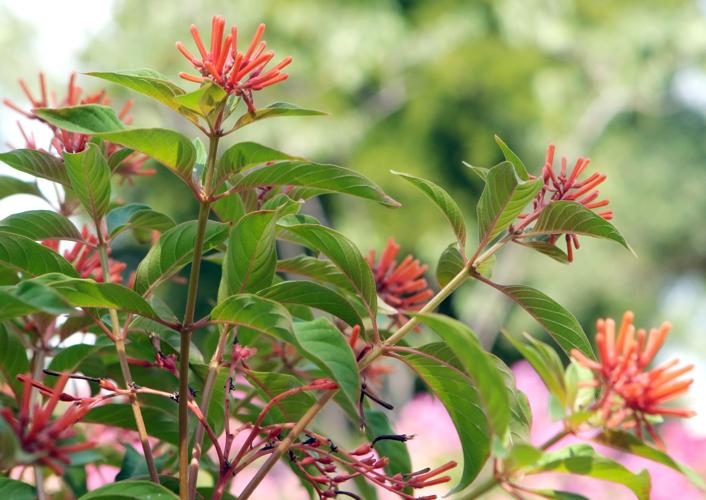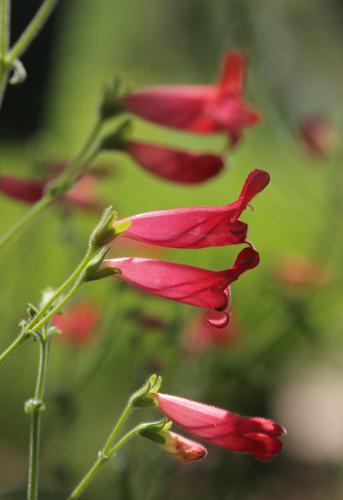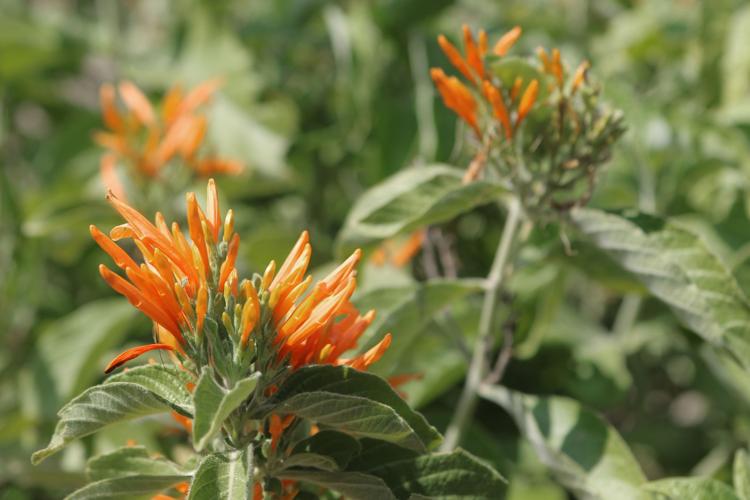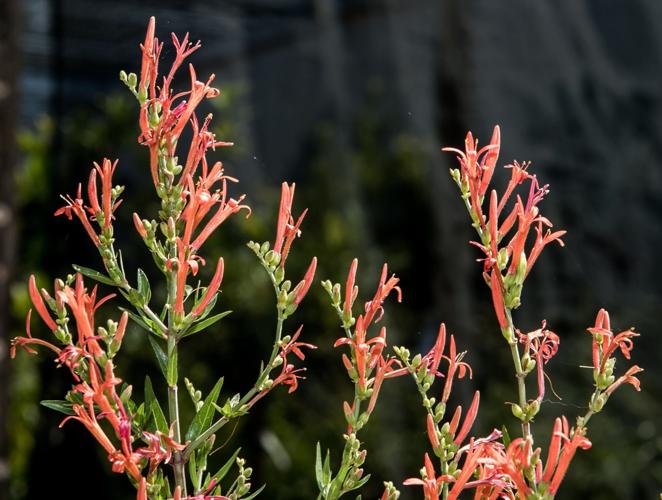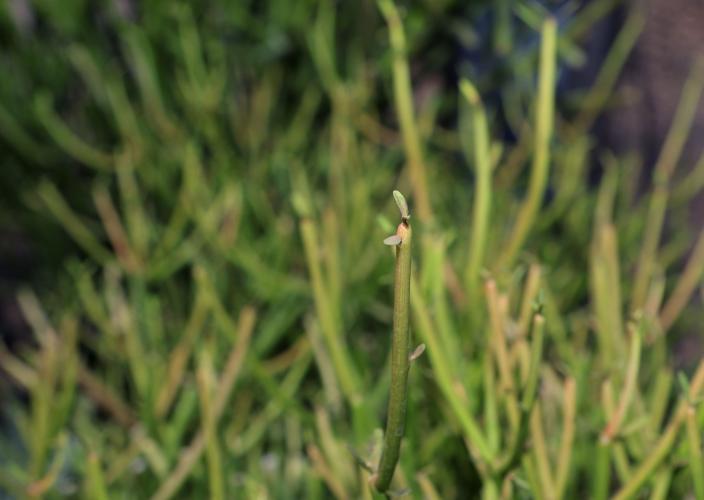Streaks of fire aren’t limited to the sky on Independence Day. Many plants present pops of fiery red and orange during hot summer days.
Here’s a sampling of plants with “fire” names that add sizzle to the summer landscape, plus one cool-climate succulent that we couldn’t resist talking about.
Firebush, Hamelia patens. Each clump of red-orange tubular flowers on the shrub looks like a crossette firework in which sprays go every which way like a swarm.
“It’s just beautiful in the summertime,” says Debbie Mounce, nursery manager at Harlow Gardens. “It’s covered in flowers all through the heat.”
But for Mounce, the real fire comes in the fall, when the leaves turn a burnt red, adding some contrast to evergreen plants. It’s cold-tender and will freeze back in low winter temperatures.
Firecracker penstemon, Penstemon eatonii. Bloom times vary among penstemon species and varieties. The firecracker reliably issues deep red-orange tubular flowers for most of the year, says Lee Mason, director of general services at Tohono Chul Park.
The firecracker can take full sun and has low water needs, he says.
While the rock penstemon, also known as diablo penstemon, or Penstemon baccharifolius, doesn’t have “fire” in its name (“diablo” is Spanish for “devil”), its another hot summer bloomer. Its tubular flowers are a deep red. The diablo likes a little more shade than the firecracker, but also needs just a little water.
“They’re very good in a wildflower garden of any kind,” Mason says of both species. The perennials attract hummingbirds and some butterflies and easily reseed. They stop blooming once the temperatures drop into the 30s.
Firecracker plant, Justicia spicigera. Also known as Mexican honeysuckle or desert honeysuckle, the evergreen shrub spouts clumps of orange tubular flowers on top of each stem like a palm tree firework.
“This is one of my favorite plants to use,” says landscape designer Paul Connolly, who owns Sundrea Design/Build. “They’ll take heat, they’ll take cold, they’ll take sun and shade.”
In shade the plant will have bigger, darker green leaves, grows leggier and flowers less than plants in full sun.
Because its leaves are larger than other desert-flowering plants, this adds a tropical look to a landscape. “It provides a nice, lush riparian look, but it’s low water use,” Connolly says.
Large firecracker plant, Cuphea “Vermillionaire.” Orange tubular flowers tipped in yellow and cream colors run all along the stems of this perennial shrub.
“It’s not native, but it’s definitely desert-adapted,” says master gardener Laura Mellow. It’s one of the plants master gardeners tend to in the container demonstration garden at the Pima County Cooperative Extension.
It blooms pretty much year round, Mellow says, seems happy in full sun and survives cold temperatures if protected.
It doesn’t need trimming, although it becomes leggy in shaded areas.
“Mexican Fire,” Anisacanthus quadrifidus v. wrightii. This loose desert-adapted shrub, also known as flame acanthus and flame honeysuckle, puts out red-orange tubular flowers that hummingbirds like, says Mounce at Harlow Gardens. It blooms in the summer through late fall. It’s cold-hardy to five degrees, but it won’t bloom in winter.
Mounce says she likes its vibrant green leaves, which contrast with other desert shrubs that typically have sage or gray foliage.
Set it out in full sun for a thicker bush and in dappled sunlight for a leggier look, she says. An occasional trimming will make it look bushier.
“St. Elmo’s Fire.” Master gardener Cindy Herron’s plant is a hybrid russelia also known as red firecracker plant. All russelias are commonly known as coral fountains because of the shrub’s cascading branches, says Mounce. Herron likens the look of the plant to the giant chrysanthemum firework.
St. Elmo’s Fire has little leaves all along its stems, making the plant look denser than other russelias.
Its tiny red trumpet flowers are prolific in the summer. “Right now it’s blooming beautifully,” Herron says of her plant at mid-June. “The more sun it gets, the better it blooms.”
Flowers will bloom from spring through fall “and sometimes in the winter if it’s not too cold,” she says. It does need protection from frost.
She suggests planting it in a pot to allow the stems to cascade to its fullest. “It looks like a firecracker exploding,” she says.
Firestick, Euphorbia tirucalli. Also known as “sticks of fire,” tips of the plant’s pencil-thin arms turn a salmon pink to pastel red. This occurs in mid-autumn, late winter and early spring.
Master gardener Diadre R.H. Metzler has one that she estimates is eight years old and 8 feet tall.
Her succulent loves heat and direct sun, says Metzler, and is drought-tolerant. It has never died back in the winter.
Its white, thick sap can irritate the skin and eyes, she cautions.
While its most dramatic coloring won’t happen in the summer, it will fit right in during Presidents Day in February.


